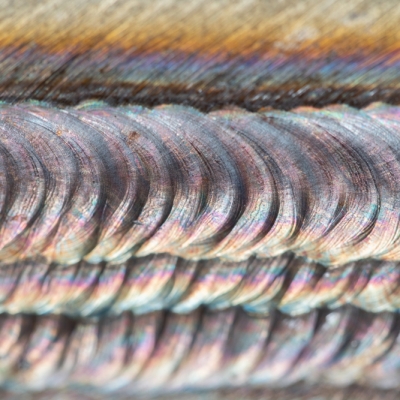Marine grade stainless steel, often called 316, is resistant to certain types of impact. There are a number of different types of 316 stainless steel, including 316 L, F, N, H, and several others. Each one is slightly different and used for different purposes. The designation "L" in 316L steel means that there is less carbon than in 316 steel. It is easy to remember because "L" in this context means low or low.
In this article we will address the differences and application areas of the different steel types.
PS: Different types of steel are produced according to the abilities required for different types of use, and the different degree systems are used to separate steel based on these abilities.

Both 316 and 316L are similar to 304, which is used in the food industry, among other things, but types 316 and 316L have better corrosion resistance and are stronger at high temperatures. They are also both non-curable by heat treatment and can be easily shaped .
316 stainless steel contains more carbon than 316L. This is easy to remember, as L stands for "low" as mentioned earlier. But although it has less carbon, the 316L is very similar to 316 in almost every way. They are both very powerful, corrosion resistant, and a good choice for high voltage situations.
316L is actually a better choice for projects that require a lot of welding, as it is more resistant to weld decay than 316. 316L is also an excellent choice of stainless steel for applications that require high temperature and corrosion resistance, making it popular for use in construction and offshore projects.
The 316 steel is an austenitic chrome-nickel stainless steel containing between two and three percent molybdenum. The molybdenum content increases corrosion resistance, improves resistance to pitting in chloride ion solutions, and increases strength at high temperatures.
316 stainless steel is particularly effective in acidic and corrosive environments. This type of steel is effective in protecting against corrosion caused by sulfuric acid, hydrochloric acid, acetic acid, formic acid and tartaric acid, as well as acid sulfates and alkaline chlorides.
Common applications for stainless steel 316 include the construction of exhaust manifolds, furnace parts, heat exchangers, jet engine parts, pharmaceutical industry, valves, pump parts, chemical process equipment, tanks and evaporators.
• Density: 7.99g/cm3
• Electrical resistivity: 74 microhm-cm (20 degrees Celsius)
• Specific heat: 0.50 kJ / kg-K (0-100 degrees Celsius)
• Thermal conductivity: 16.2 W/m-k (100 degrees Celsius)
• Elasticity module (MPa): 193 x 10 3 in voltage
• Melting point: 2,500-2,550 degrees Fahrenheit (1,371-1,399 degrees Celsius)
A summary of percentages onvarious elements used to make 316 and 316L steel:

304 stainless steel is the most widely used austenitic (non-magnetic) stainless steel. It is also known as "18/8" stainless steel due to its composition, which contains 18 percent chromium and 8 percent nickel. The 304 stainless steel has good forming and welding abilities, as well as strong corrosion resistance and strength.
This type of stainless steel also has good tensile.
It can be shaped in a variety of forms, and unlike type 302 stainless, it can be used without feritizing soft glow. Common stainless steel 304 application areas are found in the food industry. It is ideal for brewing, milk processing and winemaking, as well as for pipelines, yeast pans, fermentation water and storage tanks.
304 stainless steel is also available in sinks, tabletops, coffee boxes, refrigerators, stoves, kitchen appliances and other kitchenware. It withstands corrosion that can be caused by various chemicals found in fruits, meat and milk. Other applications include architecture, chemical containers, heat exchangers, mining equipment, as well as marine nuts, bolts and screws. 304 is also used in mining and water filtration systems as well as in the dye industry.
The 304L stainless steel is an extra-low-carbon version of the 304 steel alloy. The lower carbon content of 304L minimizes harmful carbide precipitation as a result of welding. The 304L can therefore be used "as welded"in severe corrosive environments, eliminating the need for fertifying glowing.
The 304L has slightly lower mechanical abilities than the standard 304, but is still widely used thanks to its versatility. Like 304 stainless steel, it is usually used in beer brewing and winemaking, but also for purposes beyond the food industry such as in chemical containers, mining and construction. It is ideal for use in metal parts such as nuts and bolts exposed to saline.
• Density: 8.03/cm3
• Electrical resistivity: 72 microhm-cm (20 degrees Celsius)
• Specific heat: 0.50 kJ / kg-K (0-100 degrees Celsius)
• Thermal conductivity: 16.3 W /m-k (100 degrees Celsius)
• Elasticity module (MPa): 193 x 10 3 in voltage
• Melting point: 2,500-2,650 degrees Fahrenheit (1,399-1,454 degrees Celsius)
A summary of percentages of various elements used to make 304 and 304L steel:
